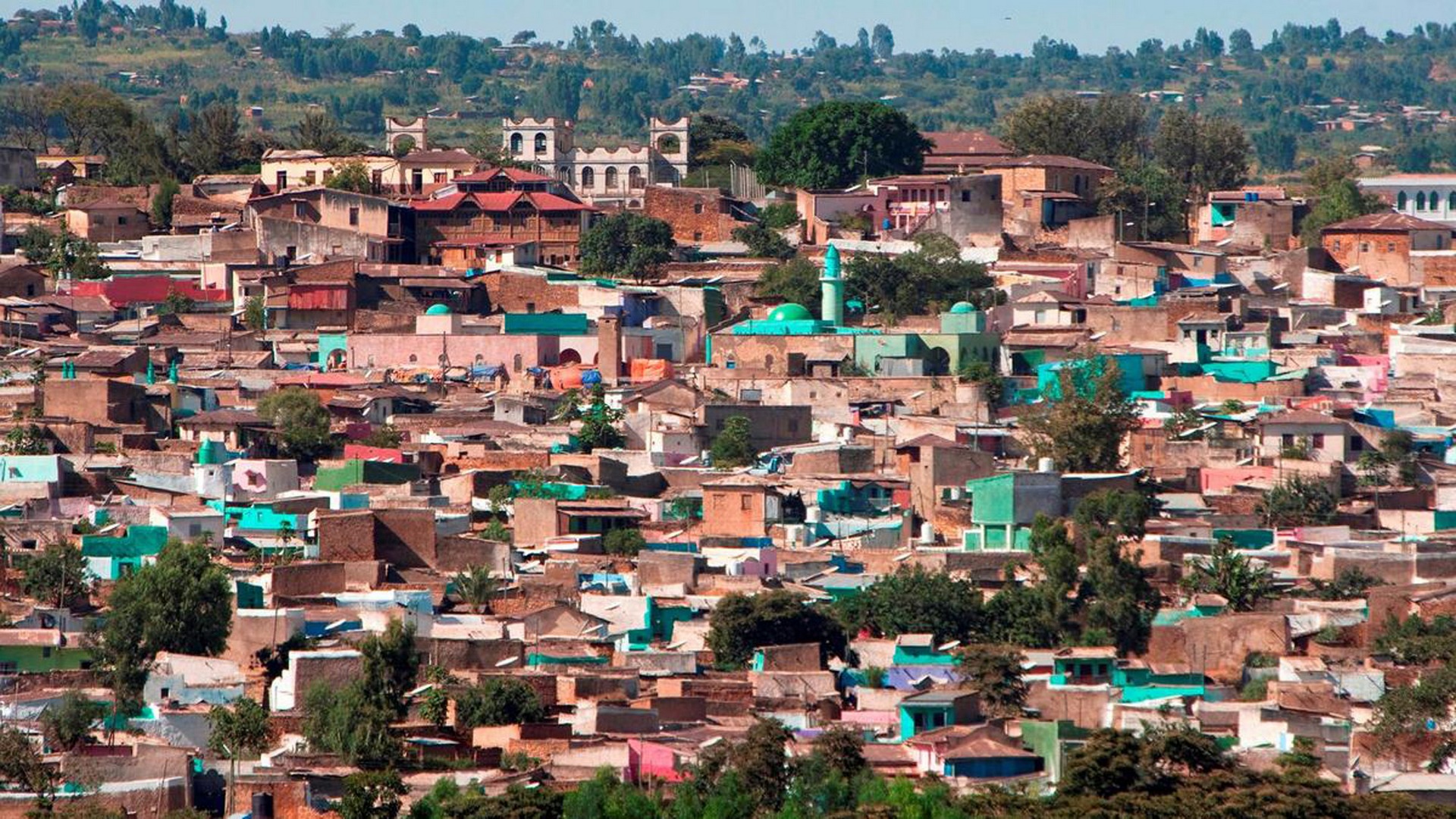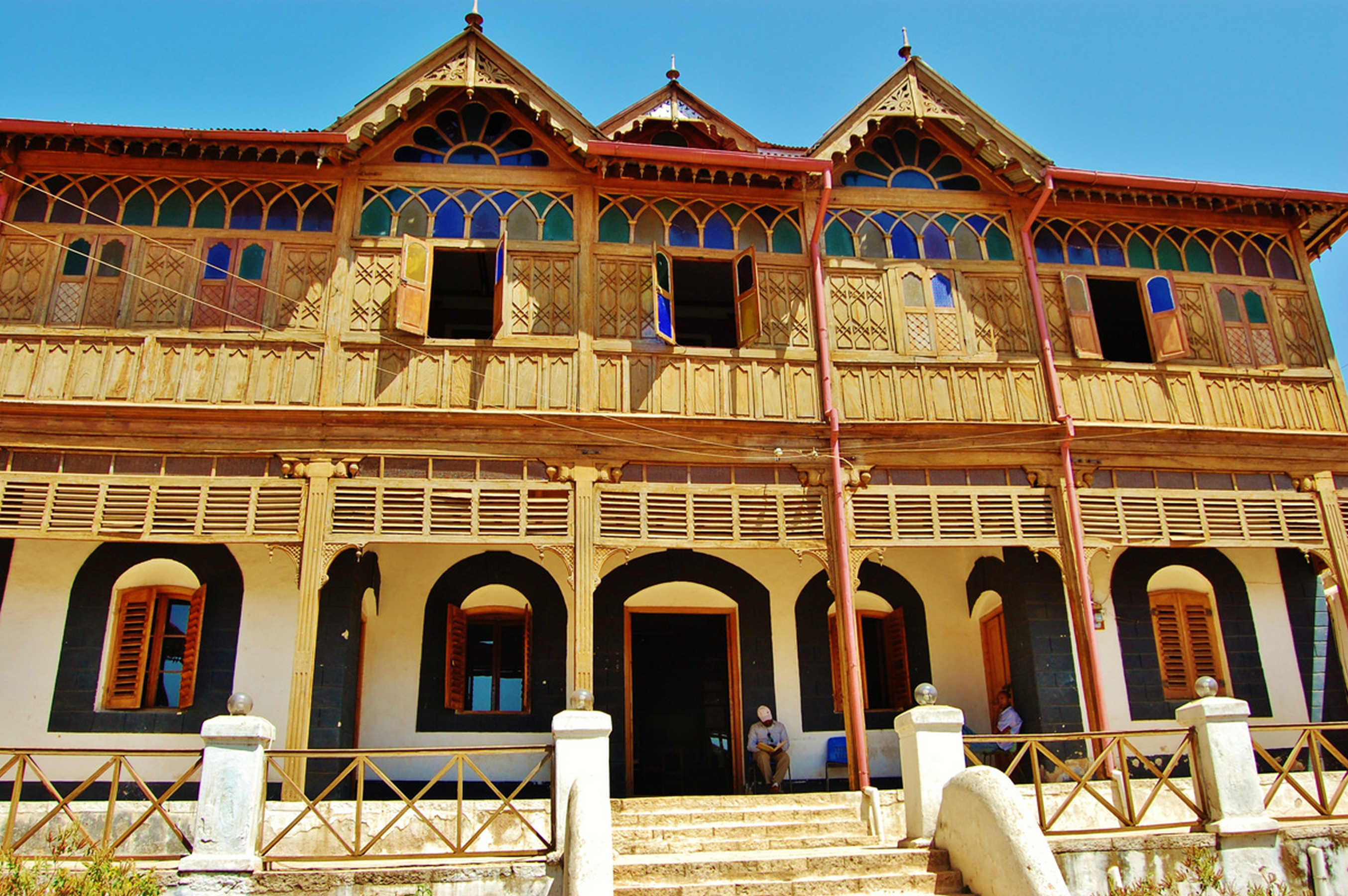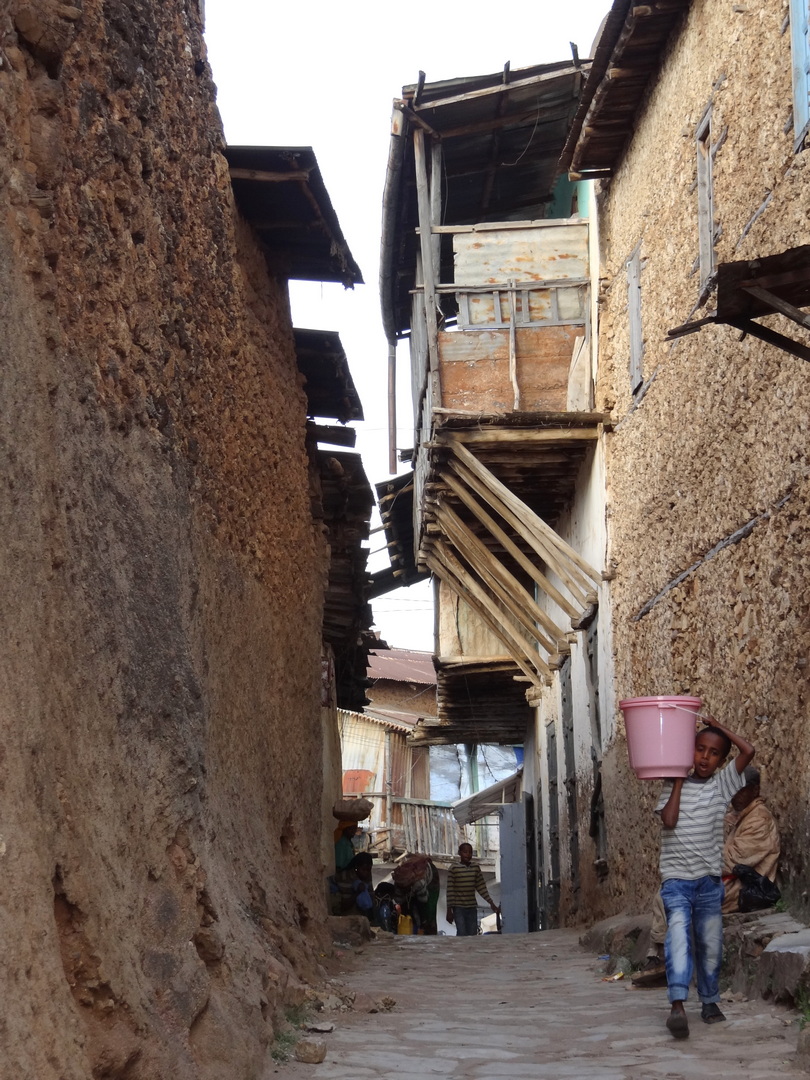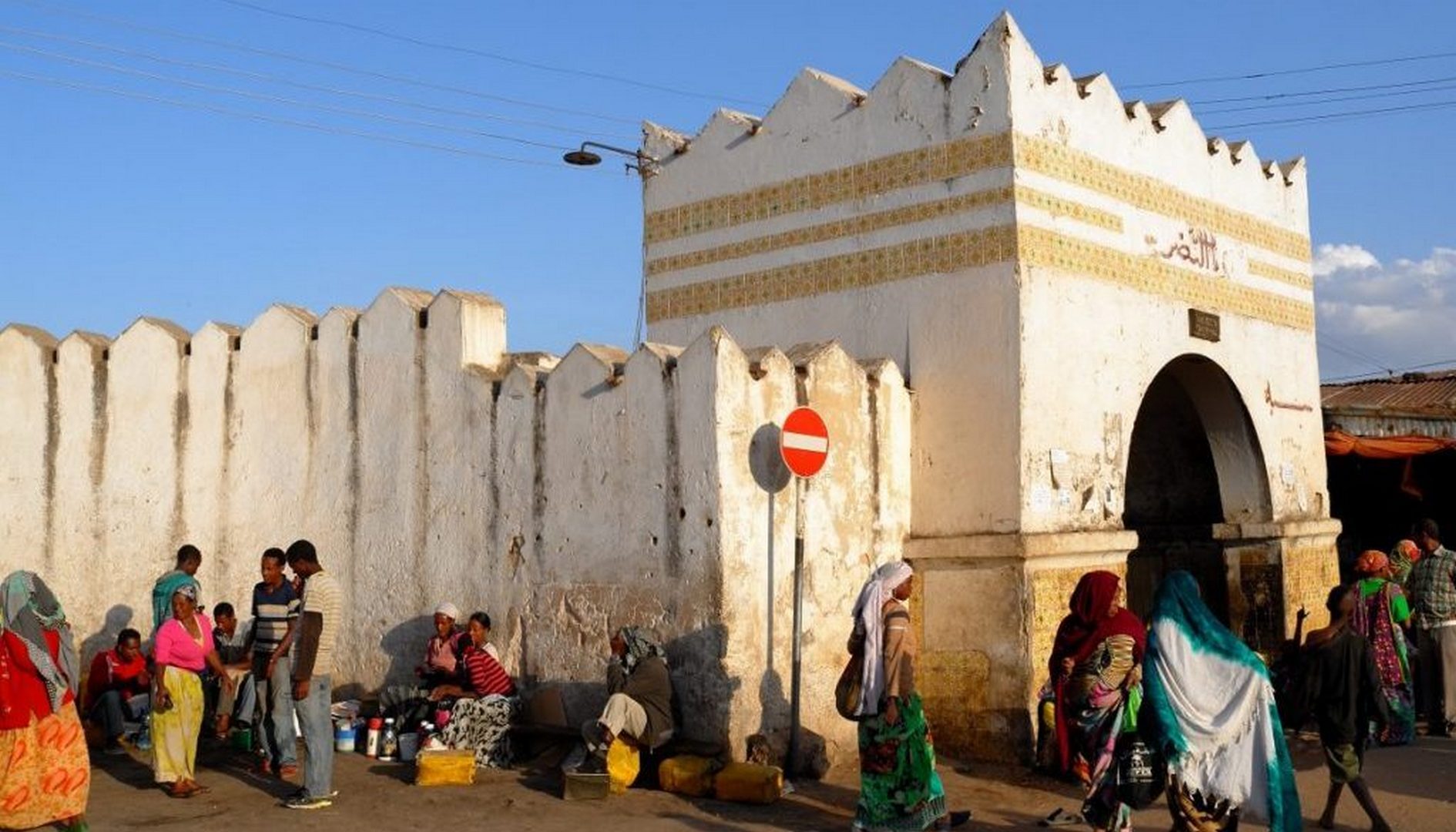Description
Property Name: Jugol, the Fortified Historic Town
Inventory No: 251-5-1
Date of infill of the inventory form: 2007-11-15
Country (State party): Ethiopia
Province: Harari Region
Town: Jugol
Geographic coordinates: 9° 18′ 32″ N
42° 8′ 16″ E
Historic Period:
Year of Construction: 13th to 16th century
Style: Ethiopian
Original Use: Settlement
Current Use: Settlement
Architect: Unknown
Significance
Harar is said to be pne of the holy cities of Islam, partly based on the fact that the Ethiopian kingdom welcomed the Prophet followers when they had to escape from Arabia. The city contains 82 mosques and more than 90 shrines scattered within the dense urban residential fabric. The most spectacular part of the cultural Heritage is certainly the traditional Harari house, whose architectural form is very typical, specific and original, very different from the domestic lay out usually known in Muslim countries, although reminiscent of the coastal Arab architecture. Their style is unique in Ethiopia and their interior design quite exceptional.
Selection Criteria
ii. to exhibit an important interchange of human values, over a span of time or within a cultural area of the world, on developments in architecture or technology, monumental arts, town-planning or landscape design
iii. to bear a unique or at least exceptional testimony to a cultural tradition or to a civilization which is living or which has disappeared
iv. to be an outstanding example of a type of building, architectural or technological ensemble or landscape which illustrates (a) significant stage(s) in human history
v. to be an outstanding example of a traditional human settlement, land-use, or sea-use which is representative of a culture (or cultures), or human interaction with the environment especially when it has become vulnerable under the impact of irreversible change
State of Preservation
Harar preserved almost completely its authenticity and integrity. The historical part of the contemporary city is well defined, limited, and clearly identified by its 16th century surrounding walls, located between the new town whose construction started under Italian occupation on the western periphery, and the rural countryside on the eastern part.
The Harari houses, which represent the most important part of the architectural built structures of the city, are the most spectacular and valuable elements of the traditional heritage of Jugol. The great majority of them have been preserved and represent an exceptional traditional artifact.
Most of the 18th and 19th buildings are still there, even if some of them have been replaced when the city was conquered by Menelik II in 1887. Harar has been officially registered as an Ethiopian National Heritage site since 1974. The Centre for Research and Conservation of Cultural Heritage (ARCCH), established in 1976, is responsible for the inventory and the definition of conservation policies, providing support for restoration work, and making decisions over grants and permits. The Jugol Heritage Conservation Office (JHCO), established in 2003, has a management committee and serves as a liaison between the Harari Counsel, under the General Meeting of the Harari People National Regional State, and representatives of the administrative and social structure in Jugol.
It is the case, for example, of the main central mosque replaced by a Christian circular church just after the conquest. At that period Indian merchants established within the walled city and constructed relatively large houses, higher than the traditional ones, with wooden verandas built upon their facades, giving a new image to the Harari urban landscape. Some of them are outstanding and beautiful mansions, like the Rimbaud house, which has been recently rehabilitated end welcomes the municipal library and cultural center. Besides the fact that these Indian residential typology is recent (end of the 19th century and beginning of the 20th century) and different from the Harari traditional one, it is a major architectural contribution to the urban history of the city. These houses are evidently part of the Harari cultural heritage.
References
Archnet Website: http://www.archnet.org
Unesco Website: http://whc.unesco.org





